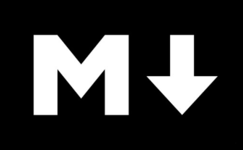-
 How to Install PyHPyLearn how to create a new PyHPy project. Also shows how to install PyHPy's several dependencies.2016-02-20 - by
How to Install PyHPyLearn how to create a new PyHPy project. Also shows how to install PyHPy's several dependencies.2016-02-20 - by -
 PyHPy Basics Part 1: Static FilesStatic files are the most basic building blocks of any project. In this tutorial, we will create a website purely from static files and PyHPy.2016-02-19 - by
PyHPy Basics Part 1: Static FilesStatic files are the most basic building blocks of any project. In this tutorial, we will create a website purely from static files and PyHPy.2016-02-19 - by -
 PyHPy Basics Part 2: Mako TemplatesIn this tutorial, we introduce the use of Mako templates in a website project. Mako templates enable dynamic generation of output, which can help you build sites that would be too much work to make by hand.2016-02-18 - by
PyHPy Basics Part 2: Mako TemplatesIn this tutorial, we introduce the use of Mako templates in a website project. Mako templates enable dynamic generation of output, which can help you build sites that would be too much work to make by hand.2016-02-18 - by -
 PyHPy Basics Part 3: MarkDown ContentIn this tutorial, we show you how your project can incorporate MarkDown text files -- the fastest, easiest, most portable way to create website content.2016-02-17 - by
PyHPy Basics Part 3: MarkDown ContentIn this tutorial, we show you how your project can incorporate MarkDown text files -- the fastest, easiest, most portable way to create website content.2016-02-17 - by -
 Mako Cheat SheetMako has a lot of really good documentation. Here's a summary that shows you how to use the most important Mako features, so you can get started quickly.2016-01-31 - by
Mako Cheat SheetMako has a lot of really good documentation. Here's a summary that shows you how to use the most important Mako features, so you can get started quickly.2016-01-31 - by -
 MarkDown Cheat SheetA quick summary of MarkDown formatting syntax.2016-01-30 - by
MarkDown Cheat SheetA quick summary of MarkDown formatting syntax.2016-01-30 - by